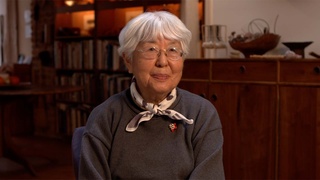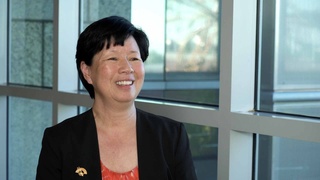Interviews
Treatment of Japanese Paraguayans during World War II (Spanish)
(Spanish) Initially, in 1903, the Paraguayan government passed a law barring black and yellow immigrants from entering. But over the years the law was abolished. In 1919, relations were first established between Paraguay and Japan. But immigrants didn’t start arriving until 1936. Of course, when the war broke out, Paraguay naturally had to take the side of the United States, and so it came out and declared war as well.
But, the important thing is that the Paraguayan government always respected the agreement they signed in 1919, which said that there would always be peaceful and friendly relations between the two countries. They always respected that, all the way up until today. There weren’t humiliations, there wasn’t concentration, concentration camps; there weren’t deportations, you know, none of those things. The only thing of course was that to adhere to the American cause, they closed schools, for example, and some diplomatic authorities returned to Japan. And that’s it, the rest was left alone. With no problems. So that’s why, with that kind of respect, I feel we were lucky, or, you know, the government did respect us.
Date: October 7, 2005
Location: California, US
Interviewer: Ann Kaneko
Contributed by: Watase Media Arts Center, Japanese American National Museum
Explore More Videos


Her mother came to the U.S. with a group of picture brides
(b. 1923) Japanese American poet, activist

Her father bought her mother American clothes after she arrived from Japan
(b. 1923) Japanese American poet, activist

Her brother’s reasons as a No-No Boy
(b. 1923) Japanese American poet, activist

Her grandfather was pressured to teach Japanese
Sansei judge on the Superior Court of Los Angeles County in California

Neighbor took care of her mother after grandfather was taken by FBI
Sansei judge on the Superior Court of Los Angeles County in California

Immediately after the bombing
(b. 1938) Japanese American. Hiroshima atomic bomb survivor

Other family members not as lucky
(b. 1938) Japanese American. Hiroshima atomic bomb survivor

His parents had little hope that he had survived the atomic bomb
(b. 1938) Japanese American. Hiroshima atomic bomb survivor

His views on nuclear weapons
(b. 1938) Japanese American. Hiroshima atomic bomb survivor

Loss When Leaving for Manzanar
Japanese American animator for Walt Disney and Hanna Barbera (1925-2007)

Forcibly deported to the U.S. from Peru
(b. 1936) Japanese Peruvian incarcerated in Crystal City

Stories of Grandfather at a concentration camp in Fusagasuga
(b.1974) Japanese Colombian who currently resides in the United States

Her grandfather in a concentration camp in Fusagasuga (Spanish)
(b.1974) Japanese Colombian who currently resides in the United States

Family welcomed at Crystal City
(b. 1936) Japanese Peruvian incarcerated in Crystal City
